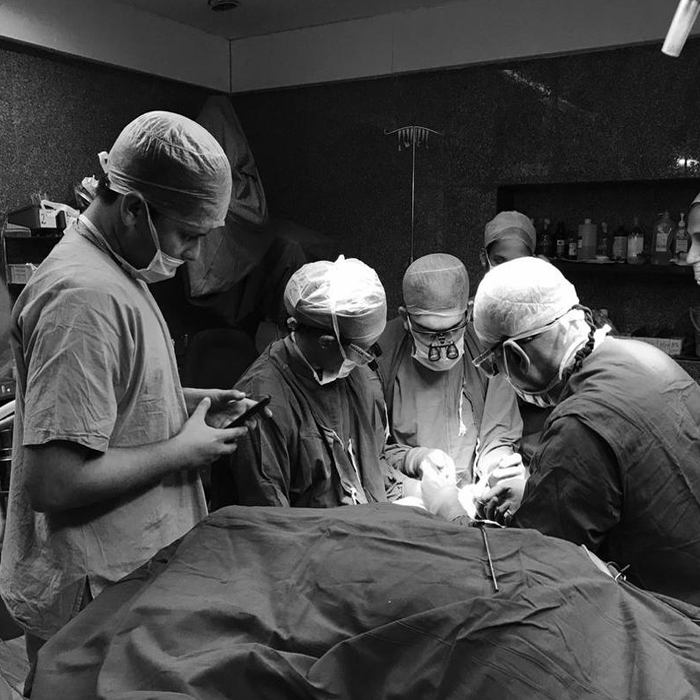
Cancer patients may have scars, defects or deformities, caused by their disease or surgical treatments, that may affect the way they feel about themselves. Reconstructive surgeons, also called plastic surgeons, are responsible for repairing, reconstructing or restoring physical defects caused by cancer or its treatment.
Reconstructive surgeons may perform skin, bone or tendon grafts, use implants to replace a muscle or a damaged body part, or transplant bone or tissue to replace an area has been removed.
These procedures may help improve patients’ appearance, reduce scarring or disfigurement or repair injured body parts that may have been damaged. The surgeries may also help cancer patients regain their confidence, dignity and sense of self, especially after experiencing the impacts of breast cancer and head and neck cancer.
With the aid of a high-magnification microscope, a plastic surgeon may be able to use a patient’s own tissue to reconstruct parts of the body affected by cancer. This is known as reconstructive microsurgery. After isolating tissue from one part of the body on an artery and vein, surgeons completely detach the tissue and transfer it elsewhere in the patient’s body for reconstruction. Usually referred to as a “free flap,” this tissue may be composed of skin, fat, muscle or even bone, or a combination of these structures.
Free tissue transfer is accomplished with the aid of a microscope that allows magnification up to 50 times that of the naked eye. Using stitches finer than a single hair, surgeons are able to reconnect the tiny blood vessels from the free flap to recipient vessels in the area of the patient’s body affected by cancer. Because these blood vessels are very small, measuring 1-3 mm in diameter, the microscope enables surgeons to work with precision, and to help avoid complications such as clotting or kinking.
The process of using a patient’s own tissue with healthy blood flow helps promote healing, reduce scarring and create a more natural-appearing reconstruction. The technique also helps reduce damage to the area of the body (donor site) where tissue is removed, providing better surgical results, faster recovery and decreased rates of complications.
Plastic surgeons can reconstruct areas affected by head and neck cancer with reconstructive microsurgery. It may be possible to reconstruct the nose, tongue or throat using tissues from other areas of the body, such as the thigh, abdomen or forearm. The lower jawbone (mandible) may be reconstructed using the smaller bone from the lower leg (fibula). For patients with facial paralysis secondary to tumor removal, transfer of a small muscle from the inner thigh may be performed to restore a smile.